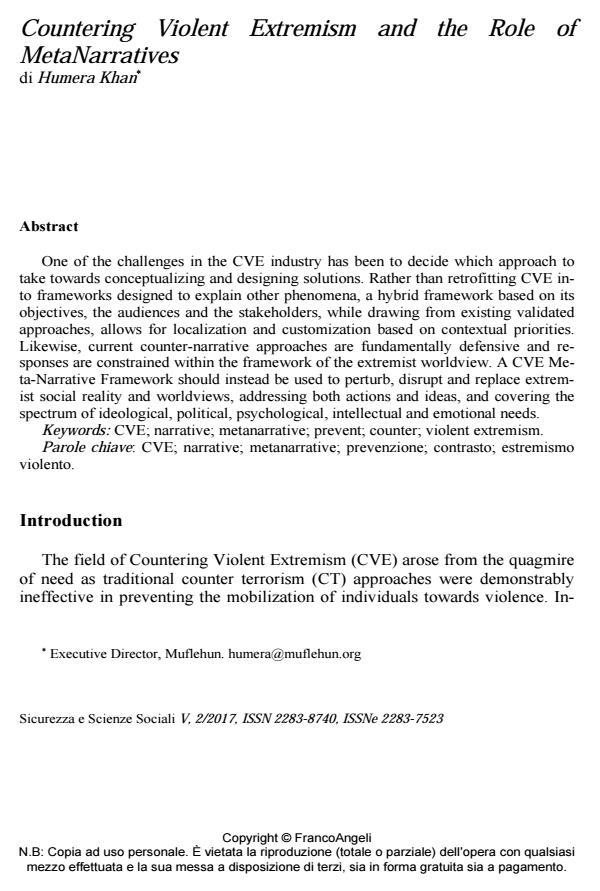Countering Violent Extremism and the Role of MetaNarratives
Titolo Rivista SICUREZZA E SCIENZE SOCIALI
Autori/Curatori Humera Khan
Anno di pubblicazione 2017 Fascicolo 2017/2
Lingua Italiano Numero pagine 20 P. 159-178 Dimensione file 205 KB
DOI 10.3280/SISS2017-002010
Il DOI è il codice a barre della proprietà intellettuale: per saperne di più
clicca qui
Qui sotto puoi vedere in anteprima la prima pagina di questo articolo.
Se questo articolo ti interessa, lo puoi acquistare (e scaricare in formato pdf) seguendo le facili indicazioni per acquistare il download credit. Acquista Download Credits per scaricare questo Articolo in formato PDF

FrancoAngeli è membro della Publishers International Linking Association, Inc (PILA)associazione indipendente e non profit per facilitare (attraverso i servizi tecnologici implementati da CrossRef.org) l’accesso degli studiosi ai contenuti digitali nelle pubblicazioni professionali e scientifiche
One of the challenges in the CVE industry has been to decide which approach to take towards conceptualizing and designing solutions. Rather than retrofitting CVE into frameworks designed to explain other phenomena, a hybrid framework based on its objectives, the audiences and the stakeholders, while drawing from existing validated approaches, allows for localization and customization based on contextual priorities. Likewise, current counter-narrative approaches are fundamentally defensive and responses are constrained within the framework of the extremist worldview. A CVE Meta-Narrative Framework should instead be used to perturb, disrupt and replace extremist social reality and worldviews, addressing both actions and ideas, and covering the spectrum of ideological, political, psychological, intellectual and emotional needs.
Parole chiave:CVE; narrative; metanarrative; prevenzione; contrasto; estremismo violento.
Humera Khan, Countering Violent Extremism and the Role of MetaNarratives in "SICUREZZA E SCIENZE SOCIALI" 2/2017, pp 159-178, DOI: 10.3280/SISS2017-002010